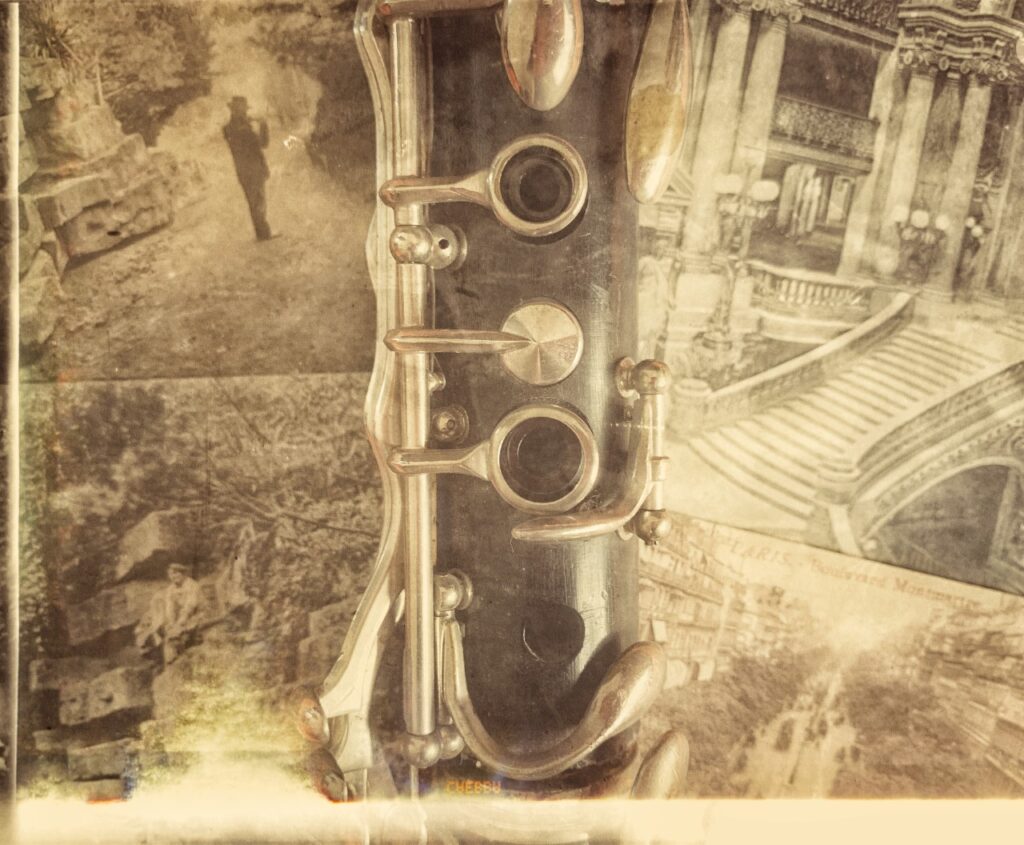The musical medium who holds a clue to the missing Mozart clarinet concerto manuscript

One of clarinet history’s greatest mysteries is the whereabouts of the manuscript to Mozart’s beloved Concerto for Clarinet in A Major, K. 622, written in 1791 for Anton Stadler.
We know that Mozart gave his fellow freemason friend Anton Stadler the manuscript of his new concerto on October 10, 1791 (only two days after he finished orchestrating the piece), along with 200 florins for “travel money” before Stadler embarked on what would become a five-year tour of Eastern Europe. (By the way, 200 florins might not sound like much, but it was the equivalent to a quarter of Mozart’s salary as a Viennese court composer.)
Stadler began his tour with a concert in Prague at the National Theater on October 13, where it is assumed that he performed the Mozart concerto, but there is no evidence and Mozart was in Baden with his wife Constanza at the time. Less than two months later, Mozart died on December 5, likely without ever hearing a performance of his beautiful concerto. Stadler continued performing throughout Europe after Mozart’s death, and the only recorded performance we have of Mozart’s clarinet concerto is in Riga, Latvia on March 5, 1794. Mozart’s widow Constanza was told by Stadler’s friends that he had pawned a briefcase with instruments and music, but Stadler claimed that it was stolen (how convenient).
Historians have been researching the possibilities ever since, and an unlikely source emerged in the 1970s – musical medium Rosemary Brown.
Rosemary Brown (1916-2001) was an English woman who claimed to be visited by the ghosts of Liszt, Schubert, Debussy, Stravinsky, and several other dearly departed composers. She claimed that these ghosts began visiting her as a child, and they would dictate new works to her through various ways. Liszt was the first to visit her when she was seven, and Rosemary claimed that he often acted as an intermediary, speaking to other composers for her.
Rosemary had no musical training or inclinations, and the resulting works she shared given by the musical spirits were studied by musicologists and psychologists. They received mixed reviews, and you can hear a conversation with her here to see what you think.
You’re probably asking yourself what this has to do with the missing Mozart manuscript.
Enter preeminent clarinet scholar Pamela Weston.
Pamela Weston (1921-2009) wrote dozens of scholarly articles and several books on all aspects of clarinet history, including the case of Mozart and Stadler.
According to her book Heroes and Heroines of Clarinettistry, Weston had the opportunity to meet Rosemary Brown in the 1970s when Brown gave a piano recital at Wigmore Hall in London featuring the new works of the spirit composers. David Cairns, the music critic of The Times, introduced Weston to Brown, and here is an excerpt of their conversation taken from Weston’s book:
“Could you please ask Mozart where the manuscript of his Clarinet Concerto is?”
“Liszt says he doesn’t know Mozart very well but he’s trying to make contact.”
(long silence as Liszt supposedly speaks to Mozart)
“Aha! Mozart has just told him that it’s in the basement of that Oboisten’s house in Vienna.”
According to Weston, “Oboisten” was a composite noun used during Mozart’s time (especially in military music) which meant ‘wind player.’
Here comes the blow – after exploring Vienna, Weston determined that Stadler’s house had been built over and no longer remains.
Here’s where things get interesting.
Stadler wasn’t the only one who had access to Mozart’s concerto manuscript. Christian Friedrich Gottlieb Schwencke came from a musical family in Hamburg, and he strongly admired all of Mozart’s works. He purchased all of Mozart’s music after it was published, and he became the AMZ Hamburg correspondent in 1799. Between 1799 and 1805 (exact year unknown), Böhme of Hamburg published Grand Quintetto pour le Pianoforte, deux Violons, Viola & Violoncelle. Composé par W. A. Mozart. Arrangé d’après un Concert pour la Clarinette par C.F.G. Schwencke, indicating that Schwencke had access to the manuscript to arrange this edition of Mozart’s concerto.
Two years after Schwencke’s death in 1822, a collection of musical items was auctioned. Item 424 read “Mozart Clarinet Concerto, score (handwritten.” According to an AMZ anonymous reviewer, he had the original score in front of him at this auction.
So, was Rosemary Brown referring to Stadler or perhaps Schwencke when she said the manuscript was in that Oboisten’s house? We may never know, but perhaps one day, the mystery of the missing Mozart clarinet concerto manuscript will be solved!
If you’re interested in learning more about Rosemary Brown, she wrote the following books about her experiences communicating with the musical spirits:
- Unfinished Symphonies: Voices from the Beyond
- Immortals at My Elbow
- Look Beyond Today
She also worked with Keturi Musikverlag to publish the compositions communicated to her by the spirits.